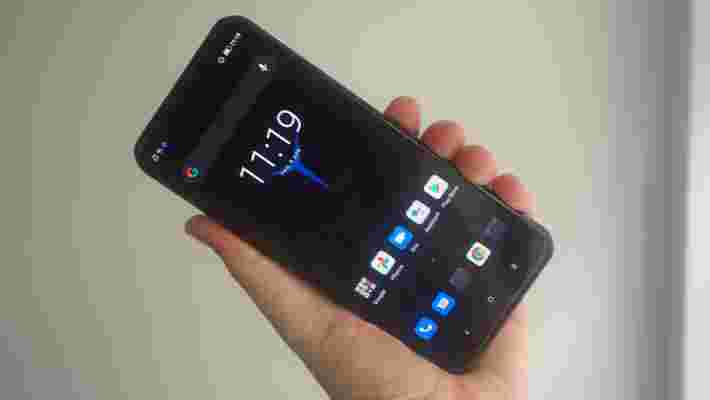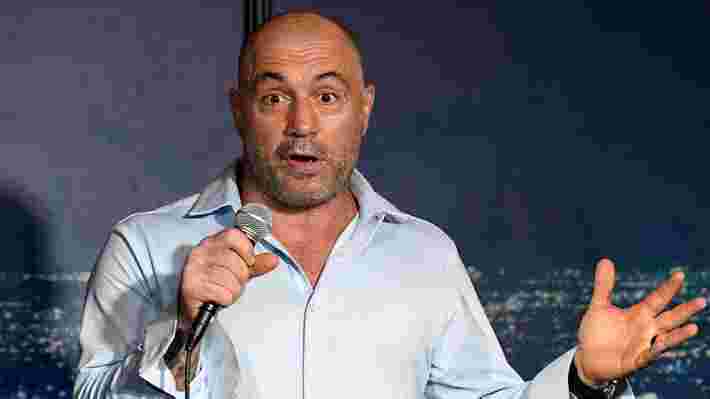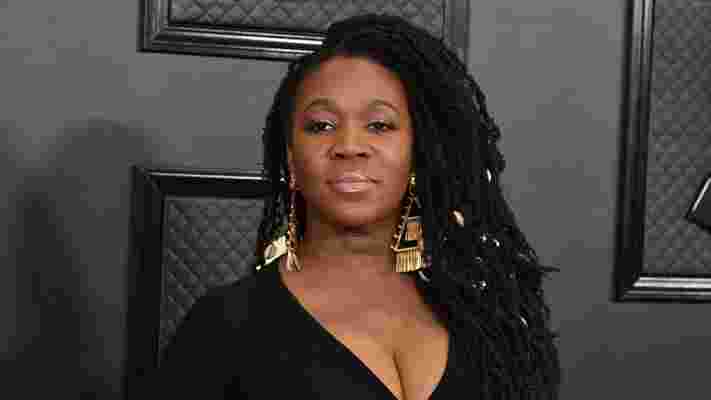With Summer still in prison, Beth turfed out of the house by John and out for blood, we also saw Rip warn Beth in the penultimate episode something is going to happen to him eventually. Tensions are rising with an explosive season finale on the horizon, and the smell of death lingering. Tune in to watch Yellowstone season 4 finale and stream episode 10 from anywhere.
*Warning: Potential season 4 spoilers ahead*
Beth Dutton's future on the ranch is in jeopardy following a fallout when John learns she is responsible for Summer ending up in jail, while Kayce has been left to the natural elements as a part of his initiation into his wife's tribe.
Meanwhile, Jamie's Governor campaign is hanging by a thread as he attempts not only to beat John, but to distance himself from his biological father, Garrett.
The pressure is mounting, with John set to unleash his anger, and Beth now in possession of a name behind the Dutton attacks.
If the last season finale is anything to go by, it's sure to be a bloody one.
Read on as we break down how to watch Yellowstone season 4 episode 10 online. And if you want even more from the Yellowstone universe, make sure you find out how to watch 1883 online, too.
How to watch Yellowstone season 4 finale from outside your country
Away from home but want to watch episode 10 of Yellowstone? You'll be unable to watch new episodes on your usual streaming service due to annoying regional restrictions.
Luckily, there’s an easy solution. Downloading a VPN will allow you to stream Yellowstone online on-demand no matter where you are. It's a simple bit of software that changes your IP address, meaning that you can access on-demand content or live TV just as if you were at home.
Use a VPN to watch Yellowstone from abroad

How to watch Yellowstone season 4 episode 10 online in the US

How to watch Yellowstone season 4 episode 10 online in Canada

How to watch Yellowstone season 4 episode 10 in Australia
Can I watch Yellowstone season 4 online in the UK?
Sadly, this excellent neo-Western drama starring Kevin Costner hasn’t found a streaming home in the UK. The first two seasons were broadcast on the Paramount Network UK over a year ago, but fans across the pond are still waiting on an air date for seasons 3 and 4.
You can buy seasons 1 and 2 on Amazon Prime Video , though, from £1.89 per episode or £12.99 per season. So newbies can get a taste of the scintillating cowboy drama that’s yet to come. And, with Peacock becoming free to Sky and Now TV customers later this year – with programming ad-supported – all four seasons of Yellowstone could be ready to stream pretty soon.
Remember, though, that if you’re away from your home country you can still access your streaming service subscription from anywhere, if you download a good VPN and follow our instructions above.
This new gaming phone has better specs than the iPhone 13 at a much lower price
Hot on the heels of its launch in China , the Nubia Red Magic 7 has now been announced for the rest of the world, revealing its price and availability in the process.
This cutting-edge gaming phone will be available to order from March 10 on the official Red Magic website , where it will start at just $629 / £529 (around AU$870). That’s for a version in a design called Obsidian, which is a black shade inspired by volcanic glass, and which comes with 12GB of RAM and 128GB of storage.
Then there’s a Pulsar model, which sports a gradient design apparently inspired by a flashing neutron star, and comes with 16GB of RAM and 256GB of storage. That one costs $729 / £619 (roughly AU$1,010).
Finally, there’s a Supernova model, which has a transparent back, 18GB of RAM and 256GB of storage. This costs $799 / £679 (approximately AU$1,105). There’s no word on Australian pricing here, but the Red Magic 7 is confirmed to be landing there too.
So this phone isn’t cheap, but even at the top end it still just about has a mid-range price, and with more RAM than the likes of the Samsung Galaxy S22 Ultra or iPhone 13 Pro Max .
The rest of the specs are no less impressive, including the likes of a top-end Snapdragon 8 Gen 1 chipset, a 6.8-inch 1080 x 2400 AMOLED screen with a 165Hz refresh rate, and a 4,500mAh battery with 65W charging.
The cameras sound slightly less impressive, as the Red Magic 7 has a 64MP main, 8MP ultra-wide, and 2MP macro setup, but no one’s buying a gaming phone for the cameras. Of course, being a gaming phone the Red Magic 7 also has the likes of physical triggers and a cooling fan.
It’s a setup that could make this the best gaming phone yet, but probably not for long, as the company has also revealed that the Red Magic 7 Pro will get a global release in the second quarter of 2022 – so between April and June.
This too has already been unveiled in China and it has even better specs, along with an under-display camera. Though we don’t know what it will cost yet, which could have a major impact on its appeal.

Analysis: competitively priced
Gaming phones tend to be relatively affordable for the specs they offer, but even within this niche, the Nubia Red Magic 7 is priced competitively.
The Lenovo Legion Phone Duel 2 for example starts at £699 (about $950 / AU$1,250), while the Asus ROG Phone 5 begins at €799 (around $950 / £685 / AU$1,235), and the Black Shark 4 launched for $499 / £429 (roughly AU$899).
So the Red Magic 7 is right in the mix there, and actually undercuts most rivals – though the Black Shark 4 is even more affordable.
Spotify’s Joe Rogan controversy: everything you need to know
Spotify is embroiled in a controversy surrounding its endorsement of podcaster Joe Rogan. His podcast, The Joe Rogan Experience , is the most popular show on the music streaming service , with the company buying the exclusive rights to distribute it for $100 million (around £73 million) back in 2020.
The controversy stems from allegations that Rogan’s podcast has spread misinformation around the Covid-19 pandemic, which has led to a number of high-profile musicians removing their music from the platform.
While Spotify has attempted to address the furore by issuing content advisory warnings to any podcast that discusses the pandemic, and by publishing its content guidelines, that hasn’t stopped some subscribers leaving the platform in protest.
Things went from bad to worse for Spotify when a video compilation highlighting Rogan’s use of racist language during previous episodes of his podcast was posted to Instagram by singer India Arrie, triggering a fresh wave of uproar.
It feels like the news surrounding the Spotify controversy has been relentless over the past few weeks. To help you get your head around the issue, we’ve compiled everything you need to know about Joe Rogan and Spotify, as well as what you should know if you’re planning on jumping ship to another streaming service.
February 7 - Rumble Inc., an online video platform popular among US conservatives, publicly offers Joe Rogan a $100 million deal to leave Spotify .
February 7 - Neil Young urges Spotify workers to leave the company “before it eats up your soul”, taking aim at CEO Daniel Ek in a blog post .
February 6 - Daniel Ek tells employees that Rogan’s use of racial slurs were “incredibly hurtful”, but that “silencing Joe is not the answer” in a memo . “While I strongly condemn what Joe has said and I agree with his decision to remove past episodes from our platform, I realize some will want more.” Ek said. He also pledges $100 million towards “licensing, development and marketing of music (artists and songwriters) and audio content from historically marginalized groups”.
February 5 - JREMissing , a site that tracks the podcast, reported that 113 episodes of the Joe Rogan experience had been pulled from Spotify.
February 5 - Rogan posts a video to Instagram in which he apologizes for his use of racial slurs in past podcast episodes, saying that “I certainly wasn’t trying to be racist”.
February 4 - Singer-songwriter India Arie posted an Instagram compilation video of Rogan using the N-word 24 times in episodes of the podcast that predate his exclusivity deal with Spotify. Arie announced that she’s removing her music from the platform.

Spotify is the most popular music-streaming platform on the planet, but the last few years have seen the company invest heavily in podcasts, and in 2020 it bought the exclusive rights to distribute The Joe Rogan Experience.
The podcast, which quickly became the most popular show on Spotify, is hosted by American comedian and mixed martial arts commentator Joe Rogan. In its 1,770-episode run, The Joe Rogan Experience has featured a wide array of guests that join the host for long-form conversations, including comedians, politicians, and actors.
It’s Rogan’s choice of guests that initially sparked the controversy, and on January 12, an open letter to Spotify was signed by over 1,000 health professionals and scientists, urging the company to tackle misinformation around the Covid-19 pandemic and vaccines.
The letter highlighted an episode of The Joe Rogan Experience that aired on December 30, 2021, in which virologist Dr Robert Malone claimed that American society was falling victim to what he called “ mass formation psychosis ” in its reaction to the pandemic. Both Rogan and Malone were criticized for promoting conspiracy theories, including the claim that hospitals have a financial incentive to record deaths as being caused by Covid-19.
The letter also asserted that Rogan had “repeatedly spread misleading and false claims on his podcast, provoking distrust in science and medicine”.
Following the publication of this letter, Canadian singer-songwriter Neil Young wrote his own open letter to Spotify, in which he threatened to remove his entire catalog of music unless the platform got rid of Rogan’s podcast. In the letter, which was later deleted, Young said that “Spotify has a responsibility to mitigate the spread of misinformation on its platform”, and that “they can have Rogan or Young… not both”.
Young’s catalog was promptly removed from the platform, with Spotify choosing to back its most lucrative podcaster over the musician – but he wouldn’t be the only artist to leave. Joni Mitchell soon followed suit, along with David Crosby, India Arie, Nils Lofgren, and others. Rogan defended his decision to interview Malone in a 10-minute video posted to Instagram , but that hasn’t stopped lots of subscribers choosing to part ways with Spotify.

In response, Spotify published its content guidelines for the first time. Among these guidelines, there’s a section dedicated to disallowing content that “promotes dangerous false or dangerous deceptive medical information that may cause offline harm or poses a direct threat to public health". The platform will also add content advisory warnings to any podcasts on the platform that cover the topic of the pandemic.
That wouldn’t be the end of Spotify’s troubles, though. On February 4, India Arie posted a compilation video to Instagram , showing Joe Rogan using the N-word 24 times in episodes of his podcast that predated his exclusivity deal with Spotify. Rogan has since apologized for his liberal use of racial slurs, saying that he “wasn’t trying to be racist” in a video posted to Instagram .
Following the fallout from this latest controversy, Spotify CEO Daniel Ek told employees that Rogan’s use of racial slurs were “incredibly hurtful”, but that “silencing Joe is not the answer” in a memo . He also pledged $100 million towards “licensing, development and marketing of music (artists and songwriters) and audio content from historically marginalized groups”.
In total, 113 episodes of the Joe Rogan Experience aren’t available to listen to on Spotify currently – and 70 of those episodes were removed following the backlash against the podcaster’s use of racial slurs. Some never made it onto the platform in the first place, with Spotify choosing to leave out episodes that featured far-right activists Alex Jones, Milo Yiannopoulos, and Gavin Mcinnes, according to Forbes .
The episode that sparked the furore, featuring Dr Robert Malone, remains on the platform. We’ve reached out to Spotify, but so far the company hasn’t offered a comment.

The highest-profile artist to leave Spotify in response to Rogan’s alleged spreading of Covid-19 misinformation was rock singer and songwriter Neil Young. His departure triggered a mini-exodus of artists from the streaming service, including folk icon Joni Mitchell.
Other artists to leave Spotify in response to the Rogan controversy include India Arie, Nils Lofgren, and Young’s former band-mates David Crosby, Stephen Stills and Graham Nash.
A number of podcasters and authors have also pledged to leave Spotify, including Roxane Gay and Mary Trump. At the time of writing, some of these artists’ content is still available to stream on Spotify – but it may not be for long.
This isn’t the first time that Spotify has lost artists, or failed to procure them in the first place. Artists that have withdrawn, or refused Spotify, the right to host their work include The Beatles, Taylor Swift, Thom Yorke, Jay-Z, and Beyonce. Their reasons for doing so varied, but Spotify has frequently come under fire for undercompensating artists; unlike physical music sales or downloads, streaming services like Spotify pay royalties based on their market share (in other words, the number of streams a song has in proportion to the total songs streamed on the service).
So, Spotify has had a complicated relationship with artists from the start - and this latest controversy could put off music fans that want to ensure they have access to a complete catalog of their favorite songs.
In a memo to staff, Daniel Ek said that, "I deeply regret that you are carrying so much of this burden. I also want to be transparent in setting the expectation that in order to achieve our goal of becoming the global audio platform, these kinds of disputes will be inevitable". That doesn't sound as though Ek is about to drop Joe Rogan.
According to Spotify, the show gets 200 million downloads per month, making it the most popular podcast in the US - and that kind of audience goes a long way in bringing Spotify closer to its ultimate goal.
There’s a lot of money to be made off the back of advertising in podcasts, and Spotify knows this. As music journalist Ted Gioia said in a tweet after the company paid $100 million (about £73 million) for the rights to The Joe Rogan Experience, “a musician would need to generate 23 billion streams on Spotify to earn what they’re paying Joe Rogan for his podcast rights.” Clearly, Spotify values Rogan.
So far, Spotify’s response to the controversy surrounding the podcast has been to remove or omit episodes that don’t meet its content guidelines. The company has also issued content advisory warnings for any podcasts that discuss the Covid-19 pandemic.
As for the episodes that contained racist language, Daniel Ek issued an apology to Spotify staff, saying that, “not only are some of Joe Rogan’s comments incredibly hurtful – I want to make clear that they do not represent the values of this company”.
Ek has also pledged to put $100 million – the same amount Spotify paid for the rights to The Joe Rogan Experience – towards the “licensing, development and marketing of music (artists and songwriters) and audio content from historically marginalized groups”.
We’ll have to wait and see whether that investment leads to a material change at Spotify - at the time of writing, the company hasn't made clear how this money will be spent in detail.
There's no empirical evidence to say for sure, but we know anecdotally that plenty of subscribers are moving to other services like Apple Music, Tidal, Deezer, and Amazon Music. Lots are staying put, though – we hosted a small Twitter poll on the issue, and of 903 respondents, 56% said that they would be “sticking with Spotify”.
While a poll of this size won’t be reflective of Spotify’s 180 million-strong subscriber base, it does show that a significant number of people either support Rogan’s podcast, or don’t care enough about the issue to jump ship.
Spotify does have cause to be worried, though. According to financial magazine Barron’s , Spotify lost $6.7 billion in market value as of January 30 – a loss of 17% week-on-week, and a fall of 26% compared to the same time last year. This loss can’t be directly attributed to the Rogan controversy, but it can’t have helped.
Spotify is still, in our view, the best music-streaming service for playlist curation, search, ease-of-use, and catalog; however, the Joe Rogan controversy won’t help the company’s battle against its rivals, which are slowly but surely encroaching upon its market share, thanks to features like hi-res audio support. For its part, Spotify announced that it would be launching a new higher-quality streaming tier last year, but has so far failed to deliver on this promise.
It’s probably the easiest streaming service to use, thanks to its comprehensive search features and simple user interface, and ad-supported ‘freemium’ streaming tier, so it suits those who are new to streaming. Spotify also has great integration with smart speakers and multi-room audio ecosystems like Sonos, making it easy to use with your existing music setup.
However, Spotify isn’t the best music-streaming service for audiophiles, as it doesn’t offer lossless or hi-res streaming. If you want to extract every last drop of detail from your music, Apple Music , Deezer , Tidal , and Amazon Music HD are all good options to try.
All of these services offer free trials, so you can see how you get on with them before committing to a subscription plan – and, if you’re worried about losing your favorite tracks, read our guide to moving Spotify playlists to other streaming services .